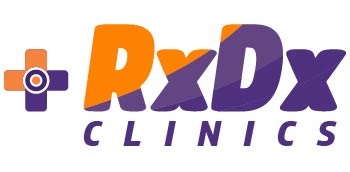Glossary & FAQ on Pain Medicine
Pain Management Techniques
Percutaneous Annuloplasty (Cervical and Lumbar)
Endoscopic Spinal Decompression
A technique to relieve pressure on spinal nerves using a small endoscope, promoting faster recovery and reduced pain.
Joint Denervation RF/Cooled (Cervical, Thoracic & Lumbar Facets)
Radiofrequency treatments to deactivate nerves causing joint pain, providing long-term relief.
Small/Large Joints, Bursa/Ligaments Infiltration
Targeted injections to reduce inflammation and pain in joints, bursae, and ligaments.
Neuro Ablation (Includes Sympathetic) - Diagnostic Block
Diagnostic and therapeutic procedures to identify and treat sources of pain by ablating nerve tissues.
Epidural Neuroplasty (Transforaminal, Caudal, Adhenolysis - Cervical, Lumbar, and Thoracic)
Techniques to remove adhesions and relieve nerve pain through epidural injections.
Big Joints Denervation - RF/Cooled RF/Cryo (Genicular Knee, Hip, and Shoulder)
Advanced denervation techniques to alleviate pain in large joints, improving mobility and function.
Vertebral Augmentation (Unipedicular or Bipedicular Approach)
Procedures to stabilize fractures in vertebrae, reducing pain and preventing further spinal issues.
Percutaneous Disc Decompression/Nucleotomy/Ozonucleolysis (Lumbar, Cervical, and Thoracic)
Minimally invasive procedures to decompress spinal discs and relieve pressure on nerves.
Percutaneous Balloon Compression
A technique to treat nerve pain by compressing the affected nerve with a balloon, providing significant pain relief.
Schedule Your Consultation Today
Don’t let pain control your life. Take the first step towards a pain-free future. Contact us now to schedule a consultation with our pain management specialists.
Frequently Asked Questions on Pain Management (FAQ)
How is pain classified?
Pain is generally classified as acute or chronic. Acute pain is short-term and often results from injury or surgery, while chronic pain persists for months or years and may not have an obvious cause.
What types of pain do you treat?
We treat a wide range of pain conditions including joint pain, back pain, headaches, cancer pain, and more.
What is interventional pain management?
Interventional pain management involves minimally invasive procedures that target the source of pain for long-term relief, such as nerve blocks and spinal injections.
How do I know which treatment is right for me?
Our specialists will conduct a thorough assessment of your condition and create a personalized treatment plan tailored to your specific needs.
What are the benefits of minimally invasive procedures?
Minimally invasive procedures often result in less pain, shorter recovery times, and reduced risk of complications compared to traditional surgery.
Which types of pain require minimally invasive procedures?
Minimally invasive procedures are often recommended for chronic pain conditions that do not respond to conservative treatments. This includes conditions like herniated discs, spinal stenosis, nerve pain, joint pain, and certain types of cancer pain.
How quickly can I expect to see results?
The timeline for results varies depending on the treatment and individual condition, but many patients experience significant relief within a few weeks.
Can chronic pain be cured?
While some chronic pain conditions can be effectively managed or alleviated, the goal is often to reduce pain and improve quality of life rather than a complete cure.
Is pain management treatment covered by insurance?
Coverage varies by provider and plan. We recommend contacting your insurance company to verify coverage for specific pain management treatments.
Do you offer non-surgical options for pain management?
Yes, we offer a variety of non-surgical treatments, including medication management, physical therapy, and minimally invasive procedures.
What conditions do you treat with spinal injections?
Spinal injections are used to treat conditions like herniated discs, spinal stenosis, sciatica, and chronic back pain. These injections help reduce inflammation and provide pain relief.
What is spinal cord stimulation?
Spinal cord stimulation involves placing a small device near the spinal cord that sends electrical impulses to block pain signals from reaching the brain. It is used for chronic pain conditions that have not responded to other treatments.
How does vertebral augmentation work?
Vertebral augmentation, such as kyphoplasty or vertebroplasty, stabilizes fractures in the vertebrae by injecting bone cement, which helps reduce pain and prevent further spinal issues.
What is radiofrequency ablation?
Radiofrequency ablation is a procedure that uses heat generated by radio waves to target specific nerves and disrupt pain signals. It is commonly used to treat chronic back and neck pain.

